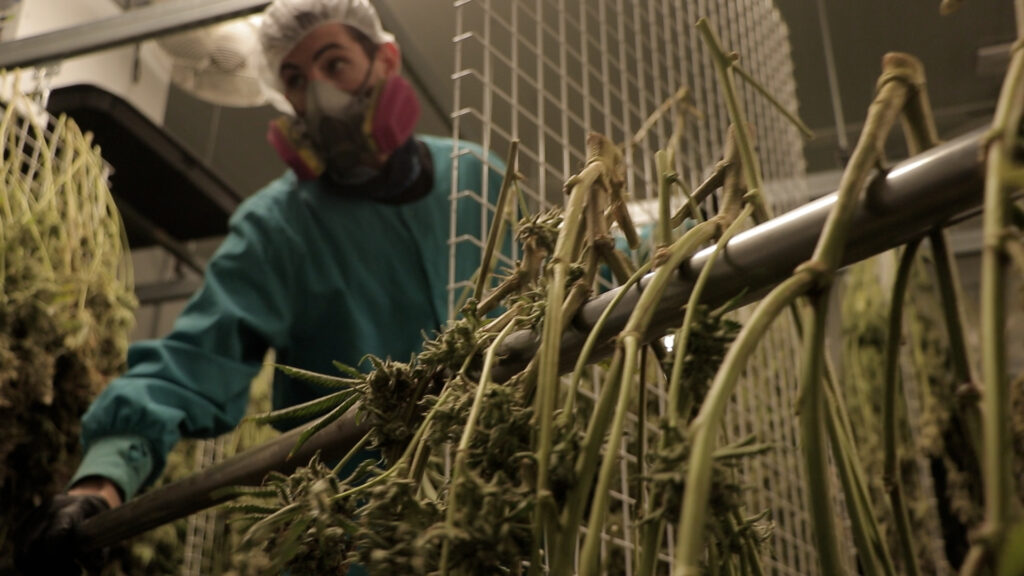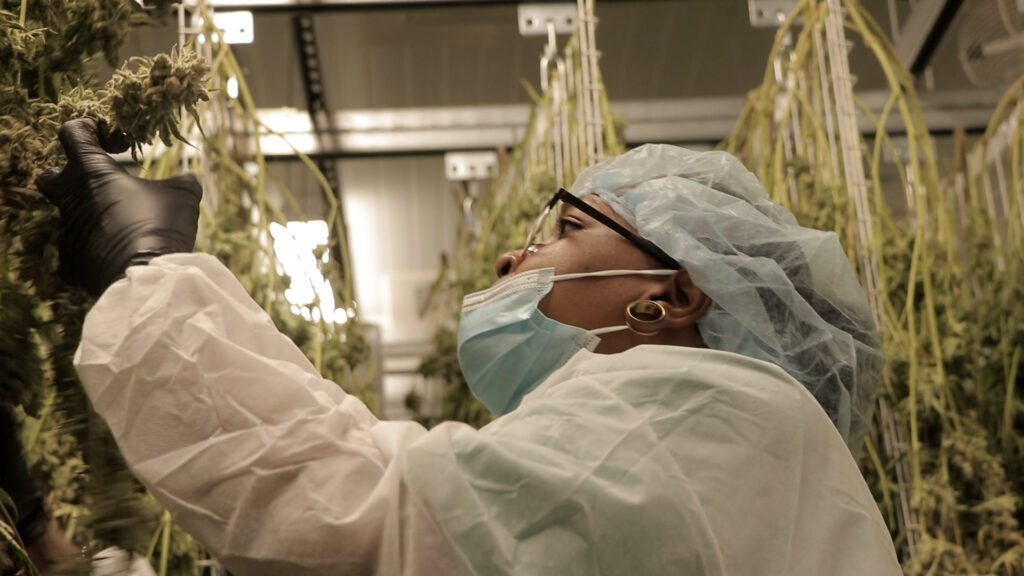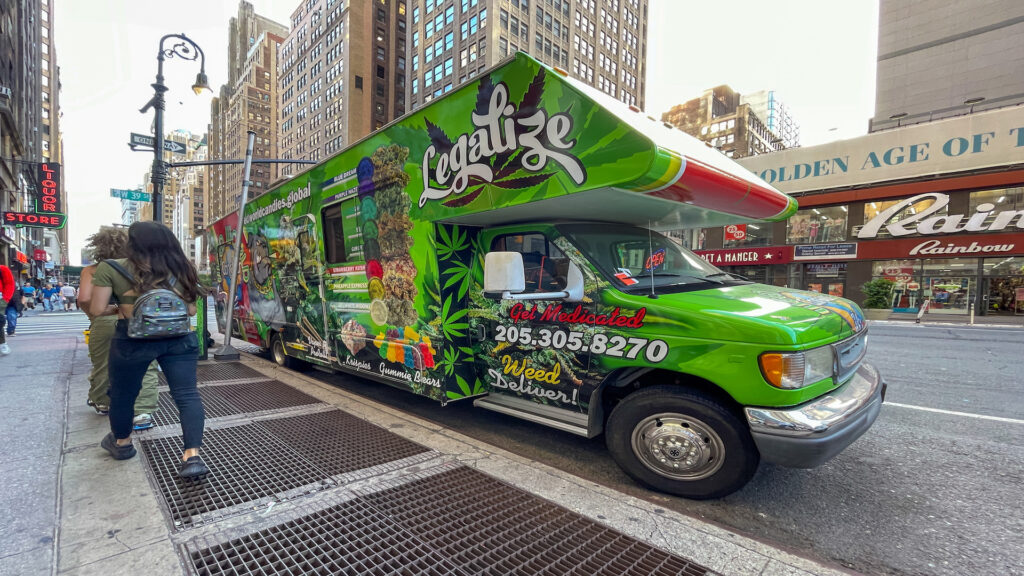
Curaleaf is pulling thousands of New York products over misleading THC labels
Here’s why patients feel duped and why Curaleaf wants the state to change testing standards from “wet weight” to “dry weight.”
In July, a medical marijuana watchdog group sniffed out a labeling discrepancy that led patients to believe Curaleaf’s products were far more potent than others on New York City dispensary shelves.
The news was broken by NY Cannabis Insider and eventually forced the world’s largest cannabis company to publicly address allegations of misleading marketing.
Curaleaf began displaying the “dry weight” potency of products in July, despite New York requiring retailers to list “wet weight” THC levels on labels. The difference between wet and dry testing can seem dramatic, as the same sample can be tested at 20% THC wet but up to 37% dry.
Related
40% THC flower?! How lab purchases and THC inflation are cheating cannabis users
The company didn’t notify retailers or government regulators of its new labeling practice, but some sellers and customers immediately took notice of the shocking numbers. With most cannabis users shopping by THC percentage, the issue has raised some red flags.
Everyone’s biggest concern: The false labels misled patients into believing that Curaleaf’s products were almost 50% more effective than competing brands. It’s not quite THC inflation — the rising trend of companies paying labs to return fraudulently high numbers — but it’s definitely not honest or fair to patients, retailers, or competitors.
Just scared by the state
On July 26, the State Office of Cannabis Management (OCM) got involved after the founder of the MMJ watchdogs included them in an email thread with the company. The Watchdog Group’s founder, Tom (last name withheld for privacy reasons), requested Certificates of Analysis (COA) for Curaleaf products after noticing the “ridiculous” THC percentages.
Curaleaf uses this fun math to bulk up their THC %s, knowing that most won’t question or request a COA. So what did the Purple Urkel actually test? 4%, 5%? Is this supposed to line @nys_cannabis’ pockets with unnecessary THC tax? Or is it for AU goods only they will be truthful? WTF pic.twitter.com/ZDLykWKzHK
— NY MMJ Watchdog Group (@mmj_ny) July 26, 2022
“I noticed that the THC percentage on the label doesn’t match the THC percentage on the lab certificate,” explained Tom. “Some pharmacies even sold the jars at a premium because they felt the batches were extremely strong or ‘extra strong.’ noticed the labeling.
After emails were exchanged between watchdogs and Curaleaf representatives, the OCM sent out an email clarifying that dry weight measurements “are for informational purposes only and cannot be applied to approved product labeling, an approved one up to that point.” method is available”.
Following the clarification, Curaleaf “voluntarily” withdrew tens of thousands of products with THC labels that did not meet the wet weight testing standards set by the New York Cannabis Administration. The company also released an apology via Twitter. However, some were further upset by the decision to tag Curaleaf’s stock ticker symbols ($CURA, $CURLF) in the apologetic post.
Here’s what Curaleaf had to say
Stephanie Cunha, a spokeswoman for Curaleaf, told NY Cannabis Insider last week that dry weight “is considered the most accurate metric for THC content in any type of cannabis sample.”
“Neighboring states like Connecticut, New Jersey, and Maryland all require dry weight-based testing,” Cunha said, explaining that the switch to dry weight testing was done to give consumers “a more accurate and consistent metric of THC content.”
That would make sense if the labeling decision only affected shoppers who shop state-to-state. But they were on shelves in New York, where Curaleaf products with the “dry weight” label were reportedly selling for more, and at higher prices in some pharmacies.
This is far from the first time Curaleaf has been disciplined by regulators. Last month, the green giant was one of three interstate cannabis companies to get on the bad side of the New Jersey Cannabis Board by breaking strict “patient-first” laws during the opening week of adult sales.
Other sanctions in Oregon, Massachusetts and (again) New Jersey would shut down most businesses. But the fines largely add up to the “cost of doing business” for Curaleaf.
With 135 retail locations operating nationwide and retail sales growing 18 straight quarters, the company doesn’t have to deceive, push boundaries or squeeze margins to stay in business. They and other multi-state operators already have a massive lead over legacy and social equity operators hoping to join the legal green rush.
In addition, they can seemingly influence laws after breaking them. After the controversy, the company said it expects the “wet weight” standards to be changed sooner or later to match their “dry weight” preference. But they also promised to abide by the applicable law until then.
Their statement reads: “In accordance with the guidelines of the OCM, the dry weight potency value will appear on Certificates of Analysis (COAs) from testing laboratories on an unofficial basis. Patients will be able to see this for each individual batch.”
Curaleaf has voluntarily stopped this practice and going forward dry weight will not appear on labels until the OCM allows it.”
Official statement from Curaleaf
New regulations with Day 1 of sale around the corner

Today (August 15), the New York City Office of Cannabis Management (OCM) published its regulations for independent laboratories, applications for laboratory testing and sampling licenses for cannabis.
There are no specifications between wet and dry weight testing in the new documents, but the OCM provides a framework for its protocol of analysis (COA) on page 37.
Related
How to Apply for a New York Pharmacy License
To prevent labs from improving financial incentive results, New York requires technical directors and senior lab technicians to oversee performance standards and quality control. Responsibilities include: “monitoring the validity of analyzes performed and data generated… ensuring that a sufficient number of qualified personnel are employed to oversee and conduct the laboratory’s work; And providing training instructions for laboratory staff.”
Each sampling process is recorded on video and provided with the batch number and multiple visual and verbal confirmations of authenticity. The video recordings must also be retained by the licensee for at least 90 days.
THC levels can be deceiving
New York isn’t the only state trying to sort through the cannabis industry’s dodgy lab testing landscape. Leafly first reported in 2019 that “lab shopping” hurt trust in the legal industry. With growers competing to produce bud with THC levels in excess of 30 percent, there is tremendous incentive to boost results at both the low and high ends of the tolerance curve.
“The people who pay for the tests are happier to get inaccurate tests that say [their products] are more potent than they really are,” Don Land, a professor of chemistry and forensics at the University of California, Davis, said in an interview with FiveThirtyEight last year.

Land believes THC inflation is subtly eroding consumer confidence in the fledgling industry. “I think it’s probably at least rare in every market out there, and there’s a very small chance that labs will get caught,” Land said.
Four Arkansas companies could be betting land on these long odds after catching THC fortification in the act.
In July, four medical patients filed a class-action lawsuit alleging that testing lab Steep Hill Arkansas and growers Bold Team, Natural State Medicinals, and Osage Creek Cultivation conspired to increase THC counts. Now the companies are embroiled in a federal case by Racketeer Influenced and Corrupt Organizations (RICO).
Shortly before the case was filed, the Arkansas Supreme Court scolded state regulators for not updating their rules and protocols and for failing to submit rules or licenses in a timely manner. “We are seeing appeal after appeal highlighting the shortcomings of the MMC,” Justice Courtney Rae Hudson wrote. She also reminded regulators of bribery allegations that surfaced when the state medicine market first took off in 2018.

The stakes are far too high for New York’s burgeoning market to kick off with an Arkansas-like mayhem. After a 2018 study found New York City to be the world’s weed-smoking capital, the entire state is poised to become one of the largest cannabis markets in the world almost overnight.
As regulators and officials threaten to crack down on modest “grey market” operations, the billion-dollar question is: if lawmakers can’t even keep highly regulated and licensed operations like Curaleaf on track, how do they? Do you plan to fairly regulate hundreds of less experienced operators?
The increasing corruption pattern in rule of law shows that limited license markets are ripe for price gouging, bribery and fraud. For this reason, measures such as home cultivation, social justice and tightly regulated testing laboratories are necessary to protect customers from neglect by companies.
These moves may not help shareholders or CEOs squeeze maximum profits from seed to sale. But they will protect the plant and those who need and love it from the brutal exploitation that comes with being one of America’s fastest-growing commodities.
Related
Leafly’s new “Cannabis Harvest Report” ranks the harvest fifth nationwide
By submitting this form, you are subscribing to Leafly news and promotional emails and agreeing to Leafly’s Terms of Service and Privacy Policy. You can unsubscribe from Leafly email communications at any time.

Post a comment: